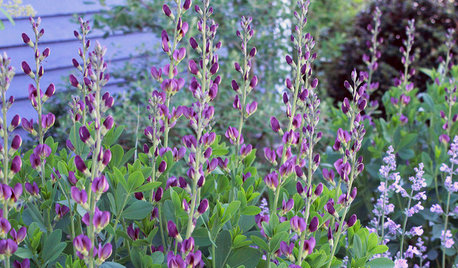New poster-couple questions-butterflies
wwtwwtwwt
10 years ago
Related Stories

HOUZZ TOURSMy Houzz: Online Finds Help Outfit This Couple’s First Home
East Vancouver homeowners turn to Craigslist to update their 1960s bungalow
Full Story
FEEL-GOOD HOMEThe Question That Can Make You Love Your Home More
Change your relationship with your house for the better by focusing on the answer to something designers often ask
Full Story
SHOP HOUZZHouzz Products: Great Wedding Gifts for Modern Couples
Give newlyweds a gift as memorable as the day itself, to have and to hold in a special place at home
Full Story
CONTEMPORARY HOMESHouzz Tour: A Creative Couple Let a Wine Country Home Breathe
Dark rooms get opened and updated, while a neutral color palette helps a range of textures stand out
Full Story
KITCHEN DESIGN9 Questions to Ask When Planning a Kitchen Pantry
Avoid blunders and get the storage space and layout you need by asking these questions before you begin
Full Story
LIGHTING5 Questions to Ask for the Best Room Lighting
Get your overhead, task and accent lighting right for decorative beauty, less eyestrain and a focus exactly where you want
Full Story
GARDENING GUIDES6 Plants That Beat Butterfly Bush for the Wildlife Draw
It's invasive, a nonnative and a poor insect magnet. Check out these better alternatives to butterfly bush in the garden
Full Story
GARDENING FOR BUTTERFLIES7 Native Wildflowers to Make You an Awesome Butterfly Host
Offer the leaves of these and you’ll get more butterflies than with flower nectar alone
Full Story
CALIFORNIA NATIVE PLANTSGreat Design Plant: Asclepias Is Attractive to Monarch Butterflies
Increase monarch butterfly populations in California by planting stunning native milkweeds
Full Story
GARDENING FOR BUTTERFLIESBe a Butterfly Savior — Garden for the Monarchs
Keep hope, beauty and kindness alive in the landscape by providing a refuge for these threatened enchanters
Full Story






bernergrrl
docmom_gw
Related Professionals
New Bedford Landscape Architects & Landscape Designers · Foothill Ranch Landscape Architects & Landscape Designers · Bedford Heights Landscape Contractors · Elkridge Landscape Contractors · Mission Viejo Landscape Contractors · Northbridge Landscape Contractors · Oklahoma City Landscape Contractors · Vermilion Landscape Contractors · West Chester Landscape Contractors · Wilton Landscape Contractors · Barrington Fence Contractors · Canoga Park Fence Contractors · Charleston Fence Contractors · Pasadena Fence Contractors · Vero Beach Window Contractorsdocmom_gw
larry_gene
Tony G
Leafhead